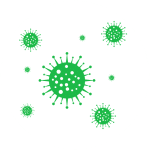Contagious skin diseases can significantly impact individuals and communities, presenting not only physical symptoms but also social implications. Understanding infectious diseases with skin rash is crucial for timely diagnosis and effective management.
This article delves into various contagious skin diseases, their symptoms, treatment options, and preventive measures to help you stay informed and protected.
Contagious skin diseases
Contagious skin diseases are infections that can spread from one person to another, usually through direct contact or shared items. These infections can be caused by bacteria, viruses, or fungi, each presenting unique characteristics and challenges.
Common examples include impetigo, a bacterial infection that often affects children, and molluscum contagiosum, a viral infection characterized by small, raised bumps on the skin. Understanding these conditions helps in identifying and managing them effectively.
What are contagious skin diseases?
Contagious skin diseases refer to infections that spread easily through contact. They can affect anyone, regardless of age or health status. The pathogens involved in these diseases often exploit breaks in the skin barrier, leading to various symptoms.
Examples include:
- Impetigo: Common among children, it presents as red sores around the mouth and nose.
- MRSA: A type of staph infection resistant to antibiotics, leading to painful skin lesions.
- Ringworm: A fungal infection causing circular, itchy rashes.
- Chickenpox: A viral infection resulting in an itchy rash and blisters.
What are the symptoms of contagious skin infections?
Symptoms of contagious skin infections can vary widely but typically include:
- Redness: Often a primary indicator of infection.
- Itching: A common symptom that can lead to scratching and further irritation.
- Blisters or sores: These may ooze or crust over, depending on the infection.
- Pain or tenderness: Infected areas may be sensitive to touch.
Recognizing these symptoms early can lead to quicker treatment and a lower risk of spreading the infection to others.
What are the treatment options for skin rashes?
Treatment for skin rashes depends on the underlying cause. Here are some common approaches:
Bacterial infections may require antibiotics, either topical or oral, to eliminate the pathogens. For instance, impetigo is often treated with topical antibiotics to reduce contamination risk.
Fungal infections, such as ringworm, typically require antifungal creams or medications. It’s essential to follow the full course of treatment to ensure complete eradication of the fungus.
Viral infections often do not have specific treatments, but supportive care, such as antihistamines for itching or soothing lotions, can alleviate discomfort.
How can you prevent contagious skin diseases?
Preventing contagious skin diseases often centers on good hygiene practices. Here are some effective strategies:
- Wash hands frequently, especially after touching infected areas.
- Avoid sharing personal items such as towels, razors, or clothing.
- Keep skin clean and dry to inhibit fungal growth.
- Cover cuts and abrasions to prevent bacterial entry.
Education about these preventive measures is vital for communities, particularly in schools and daycare settings where infections can spread quickly.
What are the common types of infectious diseases with skin rash?
Several infectious diseases are frequently associated with skin rashes, including:
- Chickenpox: Characterized by a distinctive itchy rash and flu-like symptoms.
- Scabies: Caused by mites, leading to intense itching and a rash.
- Ringworm: A fungal infection that causes circular rashes.
Understanding these diseases helps in recognizing symptoms early, allowing for prompt treatment and minimizing the risk of transmission.
What do pictures of contagious rashes look like?
Visual identification of contagious rashes can aid significantly in diagnosis. While it’s essential to consult a healthcare professional for a definitive diagnosis, comparing symptoms with images can provide preliminary insights. Websites specializing in dermatology often feature galleries of skin conditions, showcasing:
- Impetigo: Characterized by honey-colored crusts.
- Molluscum contagiosum: Small, dome-shaped bumps.
- Ringworm: Red, scaly patches with a raised border.
Always consider professional medical advice when evaluating skin conditions, as misdiagnosis can lead to inappropriate treatments.
What are the differences between bacterial and fungal skin infections?
Bacterial and fungal skin infections differ primarily in their causes and treatment approaches:
Bacterial infections are caused by bacteria such as staphylococcus or streptococcus, often resulting in red, swollen areas that may ooze pus. Common examples include impetigo and MRSA.
Fungal infections, on the other hand, are caused by fungi and typically present as itchy, scaly patches. Common conditions include ringworm and athlete’s foot. Treatment often involves antifungal medications.
How to identify contagious skin rashes in adults?
Identifying contagious skin rashes in adults involves looking for specific signs such as:
Rashes that are itchy, red, or blistered may indicate an infectious process. Adults may also experience rashes similar to those in children, such as chickenpox, particularly if they have not been vaccinated.
To effectively identify these rashes, consider the following:
- Monitor for additional symptoms like fever or malaise.
- Note the duration of the rash; persistent rashes warrant medical attention.
- Assess for contact with others who have similar symptoms.
Related questions about contagious skin diseases
Frequently asked questions about infectious skin diseases
What infectious disease causes a rash?
Several infectious diseases can lead to rashes, including chickenpox, measles, and impetigo. Each disease presents unique rash characteristics, such as the blister-like rashes of chickenpox or the red, raised lesions of measles.
What bacterial infections cause skin rashes?
Bacterial infections like impetigo and MRSA are notable causes of skin rashes. Impetigo results in red sores, while MRSA can cause painful boils or abscesses. Prompt recognition and treatment are crucial to prevent complications.
How to tell if a rash is infectious?
Indicators of an infectious rash may include spreading of the rash, the presence of symptoms like fever, or contact with an infected person. If a rash is accompanied by pain, oozing, or crusting, it is essential to seek medical advice to determine its nature.
What are examples of skin infectious diseases?
Examples of skin infectious diseases include impetigo, ringworm, scabies, and chickenpox. Each disease exhibits distinct symptoms and requires different treatment approaches.
